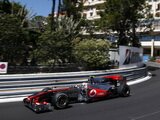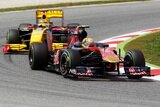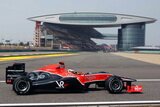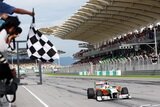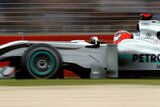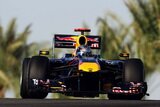Q: Paddy, could you briefly explain how the OWG came about and what its aims are?
Paddy Lowe: The OWG was formed by the FIAs Charlie Whiting in January 2007. He was facing the challenge of creating new aerodynamic regulations for 2009 and he had come to the conclusion that this could only be achieved with a small working group rather than with the more cumbersome full TWG (Technical Working Group) consisting of all 10 teams. Of course, the OWG were to report to the full TWG, which would approve and adopt the final proposals.
Q: How much overtaking should there be in Formula One and how easy should it be for a driver to pass another car?
PL: The OWG found, through experiments in the McLaren simulator, that a 2006 baseline car needed to be inherently 2 seconds/lap faster than another if it was to have a chance to overtake at Turn 1 of the old Barcelona track (this being the easiest place at that circuit, but arguably one of the more difficult overtakes in the season, it was considered a good OWG benchmark).
What we found through OWG measures (defined for 2009) was that this figure was reduced to 1 second/lap - i.e. a halving of the necessary performance differential. In my view this is a very big and important step. We may indeed find that this is sufficient. Clearly a 0 second/lap differential is nonsensical - you would never catch the guy in the first place - so it is not as though we only made half the necessary progress! I also do not believe we want to make overtaking trivial if your car is at all faster - i.e. if we reduced that same number to 0.2sec/lap, say, then it would almost guarantee that any faster car could overtake any slower car without delay - a really quite boring prospect.
Q: What were the problems with the FIAs CDG wing?
PL: As it turns out, the CDG wing eliminates one of the most beneficial aspects of the single rear wing on an F1 car. The top elements of the rear wing generate a very strong set of flows each side behind the car that create inwash at ground level. This inwash effectively cleans up the wake and provides new fresh air to the following car at ground level, whilst the 'dirty' wake air is driven upwards centrally above the following car. Unfortunately the CDG wing does the exact opposite - inverts the rotation of these flows - so that the 'dirty' wake air survives much farther back behind the leading car.
Q: How will the OWGs findings manifest themselves on next years cars? What differences will fans notice?
PL: Fans will notice four main things:
a) A very wide front wing - 1800mm, as wide as the outside of the front tyres - which is lower and has a 'neutral' prescribed centre section;
b) A narrower rear wing (75%) which is 150mm higher;
c) All appendages (deflectors, winglets, chimneys etc.) are lost - the car is 'clean';
d) The diffuser kicks up at the rear wheel centre line, which is 330mm rearward of the current position.
Q: Drivers will be allowed to alter their front wings twice per lap. How will this be regulated and how many settings will be available to the drivers?
PL: The flap will be controlled and monitored by the standard ECU. The software in this unit is FIA-controlled, so it will only allow two adjustments per lap. The number of settings available to the driver will be up to the team, but the maximum flap angle range is +/- 3 degrees (i.e. 6 degrees total), so probably a team might provide one-degree steps.
Q: Will the new regulations mean that all the teams end up running near-identical wings, or will there still be scope for innovation?
PL: With regard to wings, there is almost as much scope for variety as there is today. On other areas there is much less room for change - especially the appendages, of course, which are all gone. So overall I would say at a guess there is about 50 per cent of the current scope for innovation.
Q: When can we expect to see teams start testing ‘moveable aerodynamics? And how will they test their efficacy - will we see test sessions full of drivers trying to overtake each other?
PL: Some are already testing prototype versions of front flap adjusters. This will increase during winter testing. I don't think teams will take much time testing the overtaking aspect - they will just determine the effectiveness of the flap adjustment by its direct effect on car balance in normal running.
Q: Will the drivers need to grow a couple of extra fingers over the winter? They already have a myriad of controls to cope with on the steering wheel and now were adding KERS and moveable front wings!
PL: You are right. Switch 'real estate' on the steering wheel is becoming as difficult to find as it is in the cockpit of a 747!
formula1.com
Comments:


